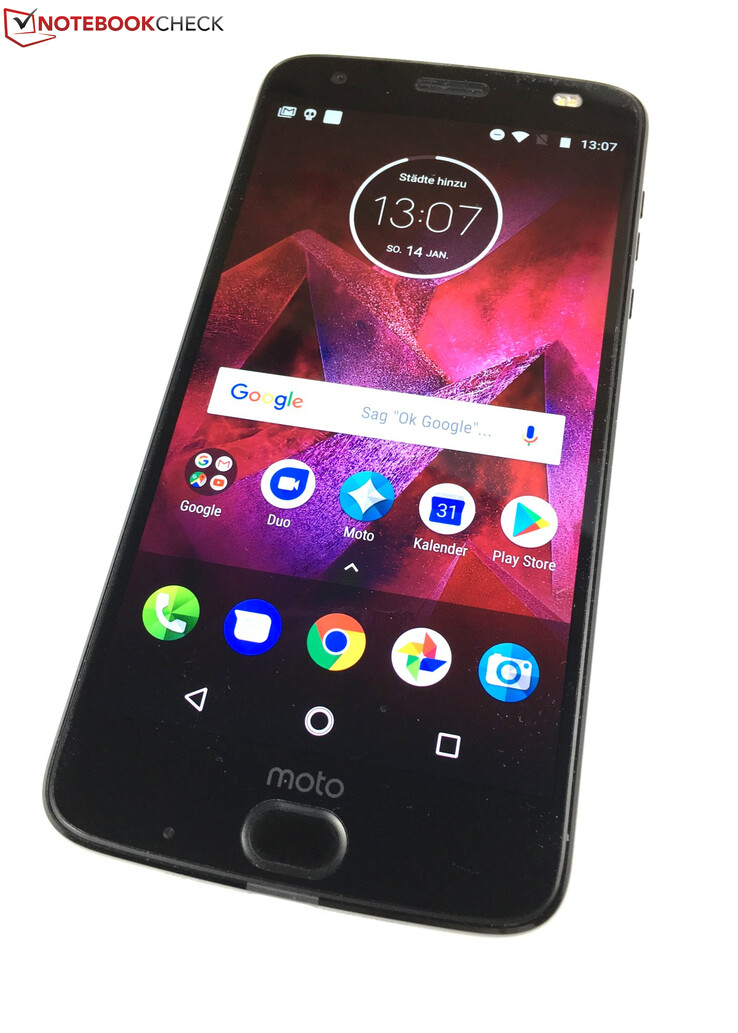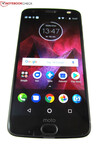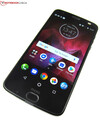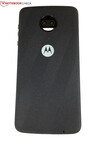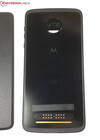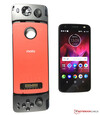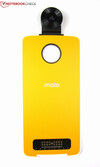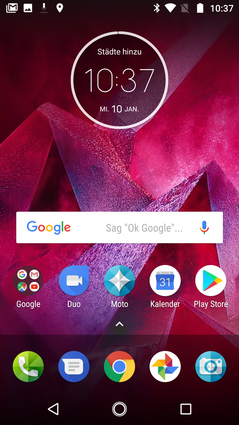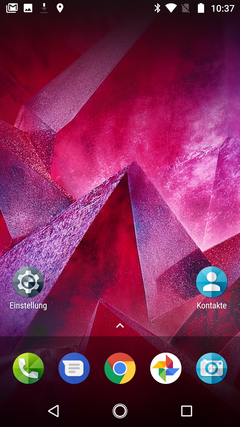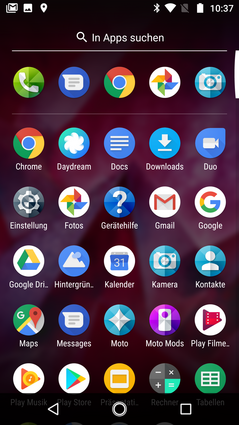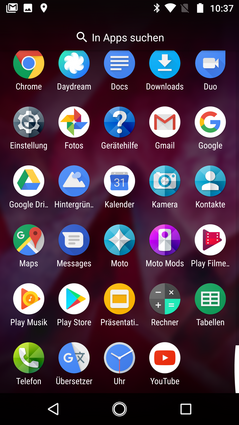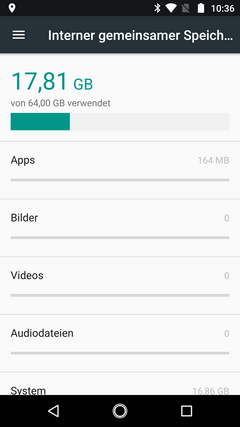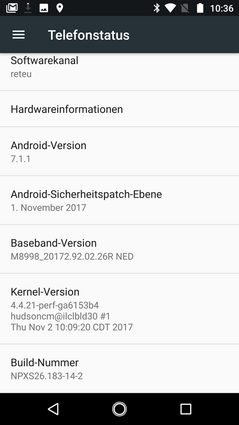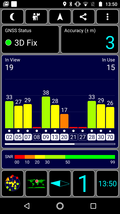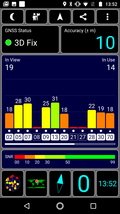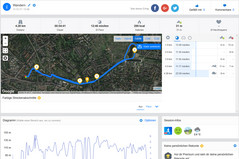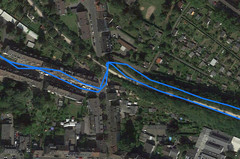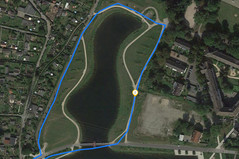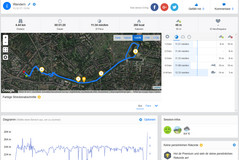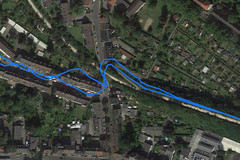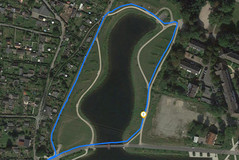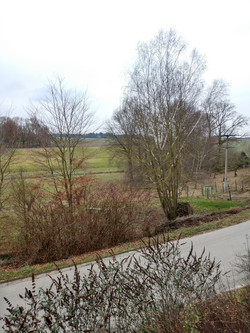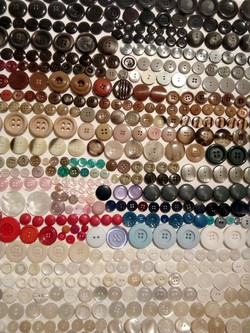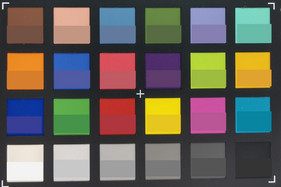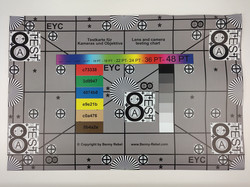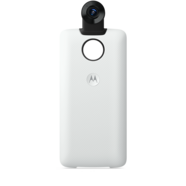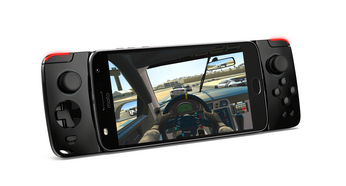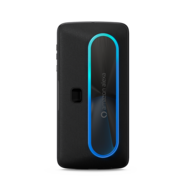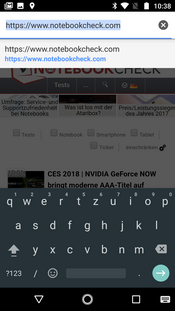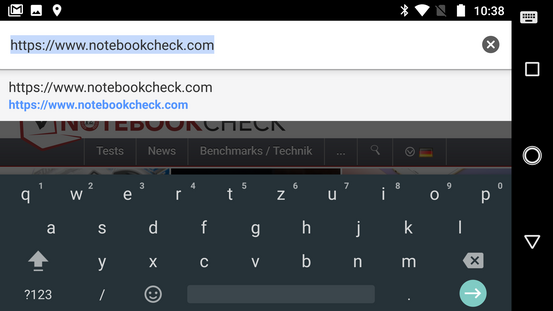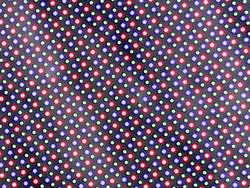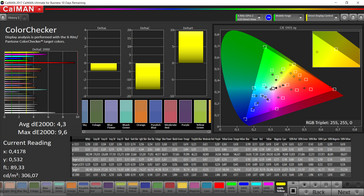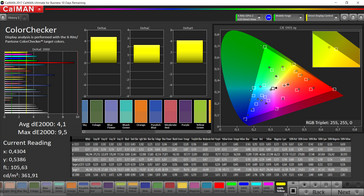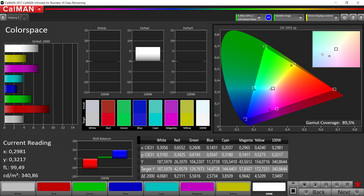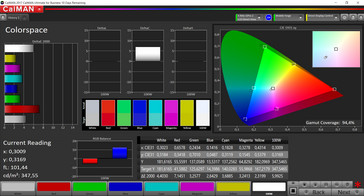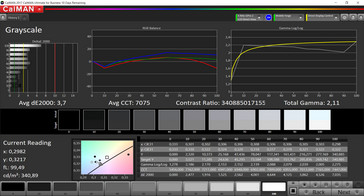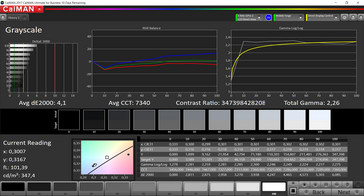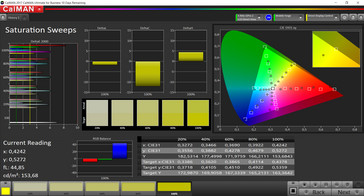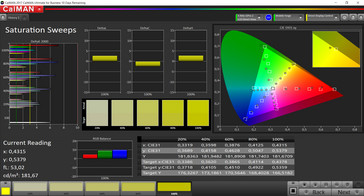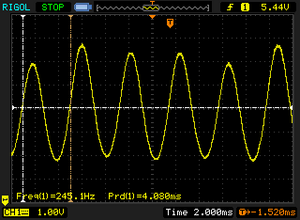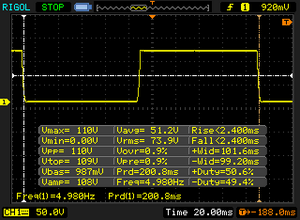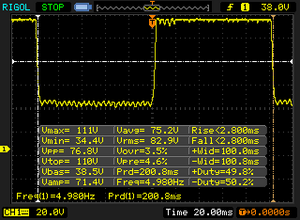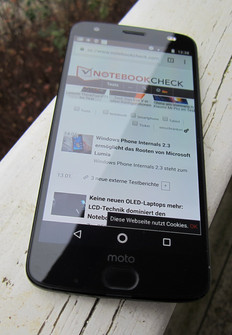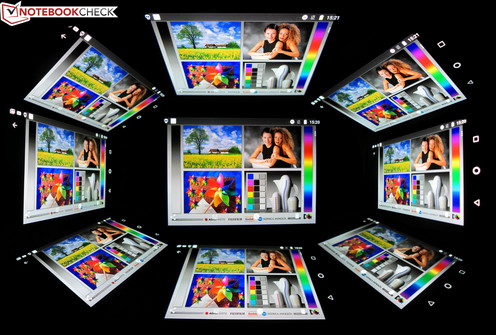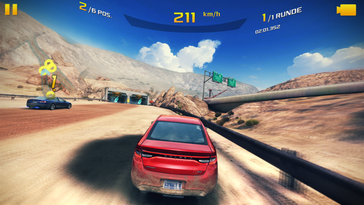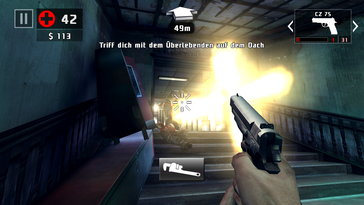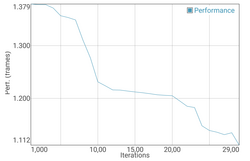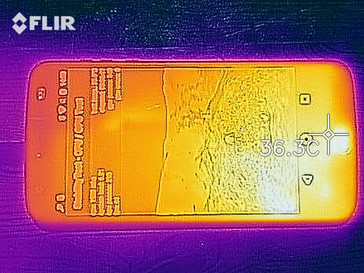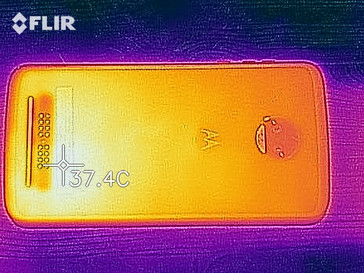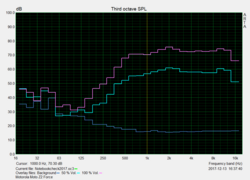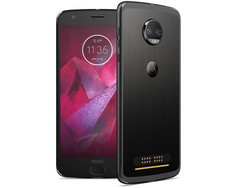Motorola Moto Z2 Force Smartphone Review
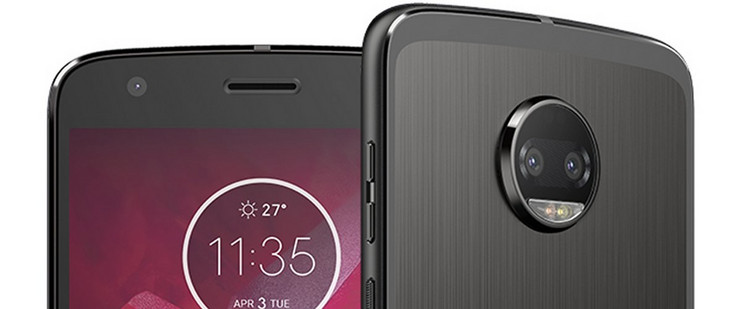
Motorola has added yet another smartphone to its Moto Z family. From the outside, the Moto Z2 Force is almost identical to the Moto Z2 Play (which, incidentally, is also 5.5-inches large) but it is equipped with much faster hardware. This would explain the much higher asking price of roughly $800. In return, you get what can only be described as proper upper-class hardware: a high-end Qualcomm Snapdragon 835 SoC, an Adreno 540 GPU, 6 GB of LPDDR4 RAM, and 64 GB of storage. As such, the Moto Z2 Force plays in the same league as the Apple iPhone 8 Plus, the HTC U11, the Huawei Mate 10 Pro, the LG V30, or the Samsung Galaxy Note 8. It is also just as expensive as these competitors.
However, there is one feature that all other competing smartphones lack and that is still very uncommon on smartphones even today: according to the manufacturer, the Moto Z2 Force is completely and 100% shatter-proof. Like any member of the Moto Z family it can be upgraded with Moto Mods, such as extra cameras, batteries, or speakers that connect to the smartphone magnetically and are able to improve its functionality.
Let us find out how well the Moto Z2 Force fared against its competitors, shall we?
Case
The Z2 Force’s unibody aluminum chassis is incredibly rigid and warp resistant. Given its official thickness of just 6.99 mm (~0.28 in), it is certainly on the slimmer side for a smartphone. However, we found the official thickness to be overly optimistic, and the Z2 Force did not seem particularly slim when placed right next to other smartphones. The answer to this riddle is the magnetic rear cover made of slightly roughened seemingly cheap plastic that can be easily removed; the actual case with its Moto Mods ports sits right underneath. After uncovering this trickery, it is of little surprise at this point that Motorola seems to have “forgotten” the fact that the rear-facing 12 MP camera bump protrudes around 2 mm (~0.08 in) from the case, but oh well.
The phone is available in “Super Black” and “Fine Gold” and equipped with a 5.5-inch Super-P OLED panel with WQHD resolution (2560x1440). The display itself is equipped with a technology referred to as ShatterShield by Motorola. This fully integrated layer within the panel renders the display completely shatter-proof: according to the manufacturer, the display is never going to shatter or even break. This promise is good for 4 years after purchase but it does not make this a ruggedized smartphone just yet. Warranty exclusions specifically mention that the smartphone is neither shock proof nor able to resists all sorts of drop damage.
The only real disadvantage is this protective layer’s susceptibility to scratches. After a few days of usage, during which we handled the Moto Z2 Force with the same care as every other smartphone, we noticed fine scratches on the display that could not be wiped clean with a microfiber cloth. The case is also not fully waterproof, but only water-resistant.
Connectivity
The Z2 Force is equipped with 6 GB of LPDDR4 RAM and 64 GB of storage, of which 46 GB is user accessible out of the box. In theory, it can be upgraded with microSD cards of up to 2 TB capacity, although as we speak the largest microSD card available is just 400 GB in size. Moving apps to SD storage is not supported by the Moto Z2 Force, and accordingly the extra space can only be used for storing media files. The hybrid dual SIM slot supports either two Nano SIM cards or one Nano SIM and one microSD card.
The USB-C port at the bottom of the Z2 Force supports USB 3.1 and therefore fast data transfers from and to the device. Unfortunately, the smartphone lacks a 3.5-mm headphone jack for hooking up headsets and headphones. A USB-C to 3.5-mm adapter is included in the box, though. Wireless communication support includes Bluetooth 4.2 (Android 7.1.1) or Bluetooth 5.0 (Android 8.0 Oreo) as well as NFC. The fingerprint reader is located underneath the display. It is slightly recessed into the case and therefore easy to locate.
Software
Out of the box, the Z2 Force runs an almost stock Android 7.1.1. The only additions are some apps by Motorola, including one to manage Moto Mods, one to better understand the smartphone and get help, and the Moto App to manage fingerprint reader, gestures, and voice control.
An update to Android 8.0 Oreo has not only been announced by the manufacturer, but Motorola has also started rolling it out in select countries. Unfortunately, we were not blessed with the new OS during the review period just yet. Android security patches were up-to-date (November 2017).
Communication and GPS
The Z2 Force supports a multitude of frequencies. In addition to GSM (850, 900, 1.800, and 1.900 MHz) and UMTS (800, 900, 1.900, and 2.100 MHz) it supports LTE bands 1, 2, 3, 4, 5, 7, 8, 12, 17, 19, 20, 26, 28, 34, 38, 39, 40, and 46. During our tests we had no problems on Germany’s Vodafone network in a rural setting. The correct data plan provided the Moto Z2 Force supports Gigabit LTE speeds with downloads of up to 1.000 MBit/s and uploads of up to 75 MBit/s.
The Z2 Force’s Wi-Fi reception was exceptional, thanks to support for MIMO. In our tests connected to our Linksys EA8500 reference router, it managed transfer speeds of just under 600 MBit/s for both, transmit and receive. As such, it was on a par with the slightly faster transmitting yet slightly slower receiving Samsung Galaxy Note 8. Only two of its competitors were even faster: the LG V30 and the Apple iPhone 8 Plus, which still sits seemingly unbeatable at the top of our scoreboard with 914 MBit/s.
Supported location services include GPS, AGPS, BeiDou, and GLONASS. Outdoor accuracy is around 3 m (~10 ft), indoor accuracy around 10 m (~33 ft).
The Moto Z2 Force did very well during our 4.4 km (~2.7 mi) long bicycle tour, pitched against a professional Garmin Edge 500 GPS. It turned out to be very accurate overall, despite occasional hick-ups in which it placed us several yards from our actual position. In all fairness, we do have to admit though that the same thing happened with the Garmin Edge 500 that day.
Telephony and Call Quality
The phone uses Google’s default telephone app, which is easy to use and offers all the features we could ask for. Call quality was decent, and phone calls to both landlines and other cell phones were clear and easily understandable. Speakerphone worked as expected.
Cameras
The Z2 Force’s main dual-lens camera features a 12 MP Sony IMX386 sensor with an aperture of f/2.0. Each photo is recorded by both sensors, one color and one b/w, and multiplexed and combined into a single image afterwards. According to the manufacturer, the dual camera should work well, even under poor lighting conditions, and it allows for interesting photo effects such as depth of field or selective black and white.
The optional Moto Mods Moto 360 camera goes several steps further and supports 360 degree photos (19 MP) or videos (4K or FHD). Once the Moto Mods camera is detected, the camera app automatically displays the corresponding 360 degree features and settings, such as spherical view or simultaneous display of main and secondary image.
Photos taken in proper daylight were sharp, colorful, and very lively. Unfortunately, photos taken in low-light conditions were not particularly good, despite Motorola’s claims to the contrary. When compared directly with the Huawei Mate 10 Pro’s dual camera the low-light photo (scene 2) is much more detailed on the latter - take a look at the Notebookcheck writing to see the difference. 4K video recording at 30 FPS is supported, and video quality is decent.
The front-facing 5 MP camera is okay overall. It features an LED flash and can record FHD videos at 30 FPS.
As expected, color accuracy and realism were not very high on Motorola’s agenda when developing and fine-tuning the Moto Z2 Force’s camera. Instead, the focus has been shifted towards lively high-contrast photos, which is why colors are slightly oversaturated by default, resulting in photos and videos that are very nice to look at. Our test chart proves that photos are in focus up to the very edges and the camera does not struggle with gradients or geometrical patterns at all.
Accessories and Warranty
The box includes a 15-W quick charger (5 V, 3 A), a USB-C to USB-A cable, a USB-C to 3.5-mm dongle, a quick start guide, and a SIM tool. Phone and accessories are covered by a 2-year limited warranty.
Accessories are a big thing for the Z2 Force. Since it supports extra hardware through Moto Mods, there are a total of 12 additional enhancements available through Motorola's website. Among others, these include stereo speakers, a mini projector, a gamepad, an extra battery, and a 360 degree camera. We have been provided with three optional mods for review: the 360 degree camera ($225), the gamepad ($60), and the smart speaker with Alexa ($115). These three are discussed in further detail in the camera, speaker, and gaming sections.
Please see our Guarantees, Return Policies and Warranties FAQ for country-specific information.
Input Devices and Handling
Subjectively speaking, the Moto Z2 Force is an incredibly snappy and smooth phone. Neither starting up, nor having many apps open at the same time or switching between these apps caused any noticeable slowdowns whatsoever. The three physical buttons at the right-hand side were also quite fast. The power button’s surface is slightly rippled, which makes it easy to locate and distinguishable from the nearby volume rocker.
The fingerprint reader is located underneath the display and serves as an additional input device. If you enable one-button controls in the Moto Action app, the fingerprint reader replaces the three standard Android buttons. Pressing acts as home, swiping left acts as back, and swiping right opens the multitasking view of all currently open apps.
The Moto Action app supports additional gestures as well, such as a double-shake for turning on the flashlight or lifting the phone slightly during an incoming call to mute all sounds and switch to vibration only. Voice controls are supported, and the phone reacts to natural sentences such as “show me” to initiate actions such as displaying the calendar, the weather forecast, or launching an app. The default keyboard on the Moto Z2 Force is Google’s GBoard.
Display
The Z2 Force’s 5.5-inch WQHD (2560x 1440) OLED display is adequate for an upper-class smartphone, and the resulting pixel density of 534 PPI is impressive; everything is razor-sharp! Other smartphones featuring an OLED display with a resolution higher than FHD are the Samsung Galaxy Note 8 and the LG V30. The Moto Z2 Force does not support HDR10.
Thanks to its OLED panel, the display can turn off individual pixels entirely, thereby creating a true black resulting in a theoretically infinite contrast ratio. Accordingly, colors truly pop on this display. The maximum display brightness with enabled ambient light sensor is an impressive 526 nits. It is limited to 348 nits with the ambient light sensor disabled. The APL50 test with evenly distributed bright and dark areas yields a maximum brightness of 580 nits.
Brightness distribution is only 88% and thus comparatively weak. That said, the uneven brightness patterns are only barely noticeable and require large uniform areas. Consequently, while we did see them in our lab, we failed to notice anything in everyday real-world use. Nevertheless, we strongly suggest inspecting the display before purchasing the device or making any purchasing decisions: it flickers at 245 Hz, which can be quite bothersome for some users.
| |||||||||||||||||||||||||
Brightness Distribution: 88 %
Center on Battery: 511 cd/m²
Contrast: ∞:1 (Black: 0 cd/m²)
ΔE ColorChecker Calman: 4.3 | ∀{0.5-29.43 Ø4.79}
ΔE Greyscale Calman: 3.7 | ∀{0.09-98 Ø5}
Gamma: 2.11
CCT: 7075 K
| Motorola Moto Z2 Force OLED, 2560x1440, 5.5" | Huawei Mate 10 Pro OLED, 2160x1080, 6" | Samsung Galaxy Note 8 Super AMOLED, 2960x1440, 6.3" | HTC U11 Super LCD5, 2560x1440, 5.5" | LG V30 OLED, 2880x1440, 6" | Apple iPhone 8 Plus IPS, 1920x1080, 5.5" | |
|---|---|---|---|---|---|---|
| Screen | 35% | 21% | 16% | -11% | 34% | |
| Brightness middle (cd/m²) | 511 | 629 23% | 530 4% | 482 -6% | 432 -15% | 559 9% |
| Brightness (cd/m²) | 526 | 636 21% | 536 2% | 472 -10% | 428 -19% | 538 2% |
| Brightness Distribution (%) | 88 | 94 7% | 93 6% | 90 2% | 87 -1% | 90 2% |
| Black Level * (cd/m²) | 0.33 | 0.38 | ||||
| Colorchecker dE 2000 * | 4.3 | 1.7 60% | 2.6 40% | 3.2 26% | 4.18 3% | 1.3 70% |
| Colorchecker dE 2000 max. * | 9.6 | 3.6 62% | 5.1 47% | 5.4 44% | 8.53 11% | 2.7 72% |
| Greyscale dE 2000 * | 3.7 | 2.4 35% | 2.7 27% | 2.2 41% | 5.3 -43% | 1.8 51% |
| Gamma | 2.11 104% | 2.15 102% | 2.04 108% | 2.22 99% | 2.33 94% | 2.25 98% |
| CCT | 7075 92% | 6337 103% | 6206 105% | 6581 99% | 7487 87% | 6797 96% |
| Contrast (:1) | 1461 | 1471 |
* ... smaller is better
The device supports two color modes in software, “Standard” and “Intensive”. We have used our spectrophotometer and the CalMAN software in both modes, and found a slight blue tint in both of them. It was more pronounced in “Intensive” (color temperature: 7340K) and almost negligible in “Standard” (color temperature: 7075K). The ideal color temperature would be 6500K. DeltaE deviations were also slightly above the ideal value of less than 3 in both modes. The bottom line: “Standard” offers a more accurate color representation while “Intensive” has a higher color space coverage.
Screen Flickering / PWM (Pulse-Width Modulation)
| Screen flickering / PWM detected | 245.1 Hz | ||
The display backlight flickers at 245.1 Hz (worst case, e.g., utilizing PWM) . The frequency of 245.1 Hz is relatively low, so sensitive users will likely notice flickering and experience eyestrain at the stated brightness setting and below. In comparison: 53 % of all tested devices do not use PWM to dim the display. If PWM was detected, an average of 8167 (minimum: 5 - maximum: 343500) Hz was measured. | |||
Display Response Times
| ↔ Response Time Black to White | ||
|---|---|---|
| 4.8 ms ... rise ↗ and fall ↘ combined | ↗ 2.4 ms rise | |
| ↘ 2.4 ms fall | ||
| The screen shows very fast response rates in our tests and should be very well suited for fast-paced gaming. In comparison, all tested devices range from 0.1 (minimum) to 240 (maximum) ms. » 16 % of all devices are better. This means that the measured response time is better than the average of all tested devices (20.3 ms). | ||
| ↔ Response Time 50% Grey to 80% Grey | ||
| 5.6 ms ... rise ↗ and fall ↘ combined | ↗ 2.8 ms rise | |
| ↘ 2.8 ms fall | ||
| The screen shows very fast response rates in our tests and should be very well suited for fast-paced gaming. In comparison, all tested devices range from 0.165 (minimum) to 636 (maximum) ms. » 16 % of all devices are better. This means that the measured response time is better than the average of all tested devices (31.7 ms). | ||
Outdoors the Z2 Force benefitted immensely from its bright display and high contrast ratio. The display remained readable even at very high levels of brightness, and its viewing angles were superb. Only at extremely acute angles did colors distort ever so slightly producing the green bloom so very common for OLED displays.
Performance
Equipped with 6 GB of LPDDR4 RAM, Qualcomm’s high-end SoC Snapdragon 835, and a fast Adreno 540 GPU, the Moto Z2 Force leaves nothing to be desired. It is easily on a par with other high-end smartphones, such as the HiSilicon Kirin 970 equipped Huawei Mate 10 Pro or the Exynos 8895 equipped Samsung Galaxy Note 8. Both the HTC U11 and the LG V30 are powered by the same Qualcomm Snapdragon 835.
As expected, almost all smartphones offer virtually identical performance in our synthetic benchmarks. Only the iPhone 8 Plus is much faster than all of its Android competitors in AnTuTu and GFXBench but in return falls behind in 3DMark.
| AnTuTu v6 - Total Score (sort by value) | |
| Motorola Moto Z2 Force | |
| Huawei Mate 10 Pro | |
| Samsung Galaxy Note 8 | |
| HTC U11 | |
| LG V30 | |
| Apple iPhone 8 Plus | |
| PCMark for Android | |
| Work performance score (sort by value) | |
| Motorola Moto Z2 Force | |
| Huawei Mate 10 Pro | |
| Samsung Galaxy Note 8 | |
| HTC U11 | |
| LG V30 | |
| Work 2.0 performance score (sort by value) | |
| Motorola Moto Z2 Force | |
| Huawei Mate 10 Pro | |
| Samsung Galaxy Note 8 | |
| HTC U11 | |
| LG V30 | |
| Geekbench 4.4 | |
| 64 Bit Single-Core Score (sort by value) | |
| Motorola Moto Z2 Force | |
| Huawei Mate 10 Pro | |
| Samsung Galaxy Note 8 | |
| HTC U11 | |
| LG V30 | |
| Apple iPhone 8 Plus | |
| 64 Bit Multi-Core Score (sort by value) | |
| Motorola Moto Z2 Force | |
| Huawei Mate 10 Pro | |
| Samsung Galaxy Note 8 | |
| HTC U11 | |
| LG V30 | |
| Apple iPhone 8 Plus | |
| Compute RenderScript Score (sort by value) | |
| Huawei Mate 10 Pro | |
| Samsung Galaxy Note 8 | |
| HTC U11 | |
| LG V30 | |
| GFXBench (DX / GLBenchmark) 2.7 | |
| T-Rex Onscreen (sort by value) | |
| Motorola Moto Z2 Force | |
| Huawei Mate 10 Pro | |
| Samsung Galaxy Note 8 | |
| HTC U11 | |
| LG V30 | |
| Apple iPhone 8 Plus | |
| 1920x1080 T-Rex Offscreen (sort by value) | |
| Motorola Moto Z2 Force | |
| Huawei Mate 10 Pro | |
| Samsung Galaxy Note 8 | |
| HTC U11 | |
| LG V30 | |
| Apple iPhone 8 Plus | |
| GFXBench 3.0 | |
| on screen Manhattan Onscreen OGL (sort by value) | |
| Motorola Moto Z2 Force | |
| Huawei Mate 10 Pro | |
| Samsung Galaxy Note 8 | |
| HTC U11 | |
| LG V30 | |
| Apple iPhone 8 Plus | |
| 1920x1080 1080p Manhattan Offscreen (sort by value) | |
| Motorola Moto Z2 Force | |
| Huawei Mate 10 Pro | |
| Samsung Galaxy Note 8 | |
| HTC U11 | |
| LG V30 | |
| Apple iPhone 8 Plus | |
| GFXBench 3.1 | |
| on screen Manhattan ES 3.1 Onscreen (sort by value) | |
| Motorola Moto Z2 Force | |
| Huawei Mate 10 Pro | |
| Samsung Galaxy Note 8 | |
| HTC U11 | |
| LG V30 | |
| Apple iPhone 8 Plus | |
| 1920x1080 Manhattan ES 3.1 Offscreen (sort by value) | |
| Motorola Moto Z2 Force | |
| Huawei Mate 10 Pro | |
| Samsung Galaxy Note 8 | |
| HTC U11 | |
| LG V30 | |
| Apple iPhone 8 Plus | |
| GFXBench | |
| on screen Car Chase Onscreen (sort by value) | |
| Motorola Moto Z2 Force | |
| Huawei Mate 10 Pro | |
| Samsung Galaxy Note 8 | |
| HTC U11 | |
| LG V30 | |
| 1920x1080 Car Chase Offscreen (sort by value) | |
| Motorola Moto Z2 Force | |
| Huawei Mate 10 Pro | |
| Samsung Galaxy Note 8 | |
| HTC U11 | |
| LG V30 | |
It is always interesting to see how well these synthetic benchmarks translate into real-world usage and looking at our browser benchmarks we have to admit that the iPhone 8 Plus practically wiped the floor with its Android competitors. No other device came even close to the Apple smartphone. This does not mean that the Moto Z2 Force (or the other competitors, for that matter) were slow in any way, just not as blazingly fast as the iPhone 8 Plus. In other words: their base performance was so high that in real-world usage, the differences between the fastest and the slowest smartphone in our test group were completely imperceptible and thus irrelevant.
| JetStream 1.1 - Total Score | |
| Apple iPhone 8 Plus | |
| Samsung Galaxy Note 8 (Samsung Browser 6.0) | |
| HTC U11 (Chrome 58) | |
| Motorola Moto Z2 Force (Chrome 63.0.3239.111) | |
| Huawei Mate 10 Pro (Chrome 61) | |
| LG V30 (Chrome 62) | |
| Octane V2 - Total Score | |
| Apple iPhone 8 Plus | |
| Samsung Galaxy Note 8 (Samsung Browser 6.0) | |
| Motorola Moto Z2 Force (Chrome 63.0.3239.111) | |
| HTC U11 (Chrome 58) | |
| LG V30 (Chrome 62) | |
| Huawei Mate 10 Pro (Chrome 61) | |
| Mozilla Kraken 1.1 - Total | |
| LG V30 (Chrome 62) | |
| Huawei Mate 10 Pro (Chrome 61) | |
| Motorola Moto Z2 Force (Chrome 63.0.3239.111) | |
| HTC U11 (Chrome 58) | |
| Samsung Galaxy Note 8 (Samsung Browser 6.0) | |
| Apple iPhone 8 Plus | |
| WebXPRT 2015 - Overall | |
| Apple iPhone 8 Plus | |
| HTC U11 (Chrome 58) | |
| Motorola Moto Z2 Force (Chrome 63.0.3239.111) | |
| Samsung Galaxy Note 8 (Samsung Browser 6.0) | |
| Huawei Mate 10 Pro (Chrome 61) | |
| LG V30 (Chrome 62) | |
* ... smaller is better
Motorola does not fully disclose the exact storage memory specifications for the Z2 Force. The only thing we can say for sure is that its 64 GB of on-board storage is on a par with UFS 2.1 memory that every other competitor save for the iPhone 8 Plus is equipped with. And that is about as fast as it gets for the time being. Reading from and writing to microSD card did not even get close to our Toshiba Exceria Pro M500 reference card’s maximum values of 270 and 150 MB/s, respectively. Nevertheless, performance was adequate.
| Motorola Moto Z2 Force | Huawei Mate 10 Pro | Samsung Galaxy Note 8 | HTC U11 | LG V30 | |
|---|---|---|---|---|---|
| AndroBench 3-5 | 25% | -15% | -11% | -30% | |
| Sequential Read 256KB (MB/s) | 696 | 732 5% | 797 15% | 717 3% | 669 -4% |
| Sequential Write 256KB (MB/s) | 213.6 | 208.7 -2% | 205.9 -4% | 206.4 -3% | 193.2 -10% |
| Random Read 4KB (MB/s) | 148.8 | 132.3 -11% | 122.5 -18% | 91.4 -39% | 78.2 -47% |
| Random Write 4KB (MB/s) | 78.6 | 164.4 109% | 14.55 -81% | 80 2% | 10.21 -87% |
| Sequential Read 256KB SDCard (MB/s) | 77.4 ? | 67.9 ? -12% | 68.8 ? -11% | 62.8 -19% | |
| Sequential Write 256KB SDCard (MB/s) | 54.7 ? | 59.3 ? 8% | 46.25 ? -15% | 47.2 -14% |
Gaming
Current Android games run very smoothly on the Z2 Force, and the gyroscope and motion sensors worked flawlessly. For avid gamers, the Moto Mods gamepad is definitely worth a closer look as it turns the entire smartphone into an arcade-style game station with two joysticks, a d-pad, and four buttons. It also contains an extra 1035 mAh battery which, according to Motorola, combined with a fully charged smartphone should provide enough energy for up to 8 hours of gaming. Using the gamepad is as easy as using any other Moto Mod: plug in and enjoy! The gamepad worked flawlessly with all games that we had the possibility to test it with.
The phone was so powerful that even at maximum details we struggled getting the frame rates to drop below the respective maximum for the games tested. In both “Asphalt 8: Airborne” and “Dead Trigger 2” it only happened occasionally during extremely computationally intensive hectic scenes. Still, after performing the entire benchmarks, both games ended up running at 30 and 60 FPS respectively. Neither game will run any faster since they are both limited to these frame rates.
| Dead Trigger 2 | |||
| Settings | Value | ||
| high | 60 fps | ||
| Asphalt 8: Airborne | |||
| Settings | Value | ||
| high | 30 fps | ||
| very low | 30 fps | ||
Emissions
Temperature
The device remained very cool overall, with idle surface temperatures only barely managing to cross the 23 °C (~73 °F) threshold and never rising above 35.4 °C (~96 °F), even after a full hour of maximum load. Unfortunately, we did notice some internal throttling under load while running the demanding GFXBench Battery Test Manhattan benchmark 30x in a loop. The first drop occurred around the fourth iteration, and the performance continued to decrease continuously throughout the entire test. It was, however, so subtle and minor that performance was still more than plentiful even after the phone had started to throttle, and the less demanding T-Rex benchmark was performed without any throttling at all.
(+) The maximum temperature on the upper side is 35 °C / 95 F, compared to the average of 35.2 °C / 95 F, ranging from 21.9 to 247 °C for the class Smartphone.
(+) The bottom heats up to a maximum of 35.4 °C / 96 F, compared to the average of 34 °C / 93 F
(+) In idle usage, the average temperature for the upper side is 20.6 °C / 69 F, compared to the device average of 32.9 °C / 91 F.
Speakers
The Moto Z2 Force’s single speaker sits at the front of the device and is thus not muffled if the phone is placed face up on a table. At 84.4 dB(A) it gets comparatively loud, and the soundscape was fairly balanced and even somewhat spatial despite its complete lack of base. The speaker is more than sufficient for watching YouTube videos or listening to music. A headset, which incidentally is not included, will produce much better and fuller sounds. Due to the fact that the Moto Z2 Force does not have a 3.5-mm headphone jack you will need to use the included USB-C to 3.5-mm dongle.
For improved sound performance Motorola offers two different speakers on their Moto Mods website: a smart speaker equipped with Amazon Alexa for $115 and a JBL SoundBoost speaker for $60. We were provided with the former for the review, and ended up liking it a lot. Not only was it significantly louder and of much higher quality than the smartphone’s integrated speaker, but it also produced a noticeable amount of bass.
Motorola Moto Z2 Force audio analysis
(+) | speakers can play relatively loud (84.8 dB)
Bass 100 - 315 Hz
(-) | nearly no bass - on average 28.4% lower than median
(±) | linearity of bass is average (8.2% delta to prev. frequency)
Mids 400 - 2000 Hz
(+) | balanced mids - only 2.7% away from median
(+) | mids are linear (5.1% delta to prev. frequency)
Highs 2 - 16 kHz
(+) | balanced highs - only 2.4% away from median
(+) | highs are linear (1.6% delta to prev. frequency)
Overall 100 - 16.000 Hz
(±) | linearity of overall sound is average (17.7% difference to median)
Compared to same class
» 13% of all tested devices in this class were better, 8% similar, 79% worse
» The best had a delta of 12%, average was 35%, worst was 134%
Compared to all devices tested
» 34% of all tested devices were better, 8% similar, 58% worse
» The best had a delta of 4%, average was 24%, worst was 134%
Huawei Mate 10 Pro audio analysis
(+) | speakers can play relatively loud (84.4 dB)
Bass 100 - 315 Hz
(-) | nearly no bass - on average 28.1% lower than median
(±) | linearity of bass is average (10.6% delta to prev. frequency)
Mids 400 - 2000 Hz
(±) | reduced mids - on average 7.4% lower than median
(±) | linearity of mids is average (9.2% delta to prev. frequency)
Highs 2 - 16 kHz
(±) | higher highs - on average 7% higher than median
(+) | highs are linear (3% delta to prev. frequency)
Overall 100 - 16.000 Hz
(±) | linearity of overall sound is average (25.9% difference to median)
Compared to same class
» 64% of all tested devices in this class were better, 6% similar, 29% worse
» The best had a delta of 12%, average was 35%, worst was 134%
Compared to all devices tested
» 79% of all tested devices were better, 4% similar, 17% worse
» The best had a delta of 4%, average was 24%, worst was 134%
Samsung Galaxy Note 8 audio analysis
(+) | speakers can play relatively loud (86.9 dB)
Bass 100 - 315 Hz
(-) | nearly no bass - on average 27.1% lower than median
(±) | linearity of bass is average (11% delta to prev. frequency)
Mids 400 - 2000 Hz
(+) | balanced mids - only 4.4% away from median
(+) | mids are linear (5.3% delta to prev. frequency)
Highs 2 - 16 kHz
(±) | higher highs - on average 7.6% higher than median
(±) | linearity of highs is average (7.2% delta to prev. frequency)
Overall 100 - 16.000 Hz
(±) | linearity of overall sound is average (22.2% difference to median)
Compared to same class
» 45% of all tested devices in this class were better, 7% similar, 48% worse
» The best had a delta of 12%, average was 35%, worst was 134%
Compared to all devices tested
» 63% of all tested devices were better, 6% similar, 30% worse
» The best had a delta of 4%, average was 24%, worst was 134%
Frequency diagram (checkboxes above selectable/deselectable!)
Energy Management
Power Consumption
The Z2 Force was very thrifty when it came to power consumption. With just 0.84 W (idle average) and 2.71 W (load average) it wiped the floor with its entire competition, which gobbled up around 60% more energy on average. The LG V30 was the second most efficient smartphone in our test group, but was nowhere near the Z2 Force’s modesty. Combined with its 2730 mAh battery life should be insanely good.
| Off / Standby | |
| Idle | |
| Load |
|
Key:
min: | |
| Motorola Moto Z2 Force 2730 mAh | Huawei Mate 10 Pro 4000 mAh | Samsung Galaxy Note 8 3300 mAh | HTC U11 3000 mAh | LG V30 3300 mAh | Apple iPhone 8 Plus 2691 mAh | |
|---|---|---|---|---|---|---|
| Power Consumption | -43% | -46% | -77% | -41% | -99% | |
| Idle Minimum * (Watt) | 0.52 | 0.85 -63% | 0.73 -40% | 0.73 -40% | 0.72 -38% | 0.72 -38% |
| Idle Average * (Watt) | 0.84 | 1.15 -37% | 1.44 -71% | 1.96 -133% | 1.37 -63% | 2.45 -192% |
| Idle Maximum * (Watt) | 0.85 | 1.23 -45% | 1.53 -80% | 1.98 -133% | 1.41 -66% | 2.52 -196% |
| Load Average * (Watt) | 2.71 | 4.12 -52% | 4.56 -68% | 4.82 -78% | 3.46 -28% | 3.84 -42% |
| Load Maximum * (Watt) | 7.2 | 8.42 -17% | 5.09 29% | 7.15 1% | 7.83 -9% | 9.02 -25% |
* ... smaller is better
Battery Life
Strangely enough, battery life turned out to be just good and not as exceptional as we would have expected based on the Z2 Force’s low power consumption. Still, it performed admirably and outlasted the Samsung Galaxy Note 8, the HTC U11, and the Apple iPhone 8 Plus but was in return beaten by the Huawei Mate 10 Pro and the LG V30. Compared with its sibling, the Motorola Moto Z2 Play, our review unit did not stand a chance.
The included 15-Wh charger supports quick charging and took only around 1:15 hours to recharge the battery from near empty to 100%. The 50% threshold was crossed after 30 minutes.
| Motorola Moto Z2 Force 2730 mAh | Huawei Mate 10 Pro 4000 mAh | Samsung Galaxy Note 8 3300 mAh | HTC U11 3000 mAh | LG V30 3300 mAh | Apple iPhone 8 Plus 2691 mAh | Lenovo Moto Z2 Play 3000 mAh | |
|---|---|---|---|---|---|---|---|
| Battery runtime | 22% | -23% | -25% | 10% | 0% | 23% | |
| Reader / Idle (h) | 27.2 | 29.1 7% | 18.9 -31% | 20.8 -24% | 31.9 17% | 34.8 28% | 26.5 -3% |
| H.264 (h) | 13.5 | 15.5 15% | 11 -19% | 8.3 -39% | 13.7 1% | 12.2 -10% | 15.8 17% |
| WiFi v1.3 (h) | 8.9 | 13.6 53% | 7.9 -11% | 9.3 4% | 12.9 45% | 11 24% | 12.5 40% |
| Load (h) | 5.9 | 6.6 12% | 4.1 -31% | 3.5 -41% | 4.5 -24% | 3.5 -41% | 8 36% |
Pros
Cons
Verdict
No doubt, the Moto Z2 Force is an exceptional high-end smartphone with many pros and a few cons. First things first: gaming and application performance, Wi-Fi transfer speeds, its bright WQHD OLED display, and the shatterproof display are outstanding. Android 8.0, which is already available in some select countries, is an expected update and is going to future-proof this smartphone even further.
Just like the entire Moto Z family, the Moto Z2 Force also benefits from the Moto Mods that are easy to use and can add some incredibly useful features. Granted, third-party accessories are often cheaper, but a Moto Mod’s ease of use is absolutely stunning. And unlike many other manufacturer-made accessories, the Moto Mods are not model-specific, but can be used on a wide variety of Motorola smartphones. If you already own a number of Moto Mods and are looking for a new smartphone to use them with, why not take the decently equipped and much cheaper Moto Z2 Play mid-range smartphone into consideration as well?
The virtually indestructible Motorola Moto Z2 Force offers a phenomenal level of performance. Of all things it is the display protection with its susceptibility to scratches that troubled us the most.
Unfortunately, we cannot recommend the Moto Z2 Force without issuing at least a few warnings. Most annoyingly, the one feature that makes this smartphone exceptional - the shatterproof display protection - is also its biggest weakness: it scratches very easily. Unlike some of its competitors, such as the Huawei Mate 10 Pro, the Z2 Force lacks an IP67 certification and is thus neither water nor dust-proof but only water-resistant instead. The camera performed very well under ideal lighting conditions, yet it was not able to impress us under low-light conditions despite its dual sensor that was supposedly designed specifically to improve upon low-light photography.
Motorola Moto Z2 Force
- 01/15/2018 v6 (old)
Manuel Masiero




